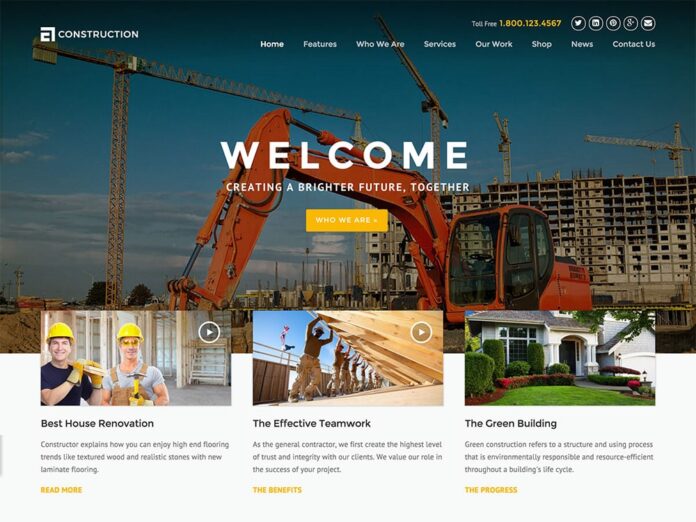In the rapidly evolving digital landscape, a robust online presence has become indispensable for businesses across all industries, and the construction sector is no different. A meticulously crafted and user-friendly website serves as a potent instrument to not only showcase your construction projects but also to attract potential clients and instill trust among your audience.
It’s important to be cautious and avoid falling into the trap of bad website habits as they can hamper your efforts. In this extensive guide, we’ll take you through the process of creating a modern construction website that not only distinguishes you from the competition but also avoids common pitfalls.
We’ll cover everything from planning your website’s structure to utilizing social proof, presenting essential steps that lead to an impressive construction website—one that leaves a lasting impression on your visitors.
Planning Your Website Structure
Before diving into visual design, it’s essential to plan your website’s structure. A user-friendly navigation system is paramount to guide visitors through your site effortlessly. Consider organizing content into logical sections and pages, allowing visitors to find information quickly and efficiently. Incorporate a clear and intuitive menu that showcases essential categories such as Home, About Us, Services, Projects, and Contact.
Creating a Modern and Engaging Layout
A clean and professional design is fundamental for a modern construction website. Opt for a sleek and minimalist layout that emphasizes usability and clarity. Avoid clutter and excessive use of text. Instead, use whitespace to allow content to breathe and create a sense of elegance. Utilize high-quality visuals and images to capture visitors’ attention and provide a glimpse of your construction prowess.
Designing Your Portfolio Section
Your portfolio is a crucial element in creating successful construction websites. It serves as a showcase of your best work and a testament to your skills and expertise. Create an attractive portfolio section that highlights your completed projects and success stories. Use compelling imagery, before-and-after comparisons, and project descriptions to provide insights into your construction capabilities. Be sure to include details about the challenges faced, solutions implemented, and the end results achieved.
Integrating Contact and Lead Generation Forms
A website is a powerful lead-generation tool for your construction business. Make sure to prominently display your contact information to encourage potential clients to get in touch easily. Design effective lead capture forms to gather inquiries and valuable data. Keep the forms concise and straightforward, asking for only essential information. Ensure that your contact page is easily accessible from every part of your website.
Incorporating Social Proof and Trust Signals
In the construction industry, establishing trust is crucial. Incorporate social proof elements to showcase your credibility and reliability. Display certifications, awards, and affiliations prominently on your website. These badges add credibility and demonstrate your commitment to excellence. Furthermore, include client logos and testimonials to build trust among potential clients. Positive feedback from satisfied customers can significantly influence visitors’ decisions.
Conclusion
Building a modern construction website is an opportunity to make a lasting impression on your audience. By avoiding “bad website habits” and following the steps outlined in this article, you can create an inspiring online platform for your construction business.
Remember to focus on user-friendly navigation, incorporate a clean and professional design, and showcase your projects through an attractive portfolio section. Utilize contact and lead generation forms to capture potential clients’ inquiries effectively and integrate social proof and trust signals to build credibility.
With a well-designed construction website, you can attract new clients, strengthen your brand, and stay ahead of the competition in the digital realm.

